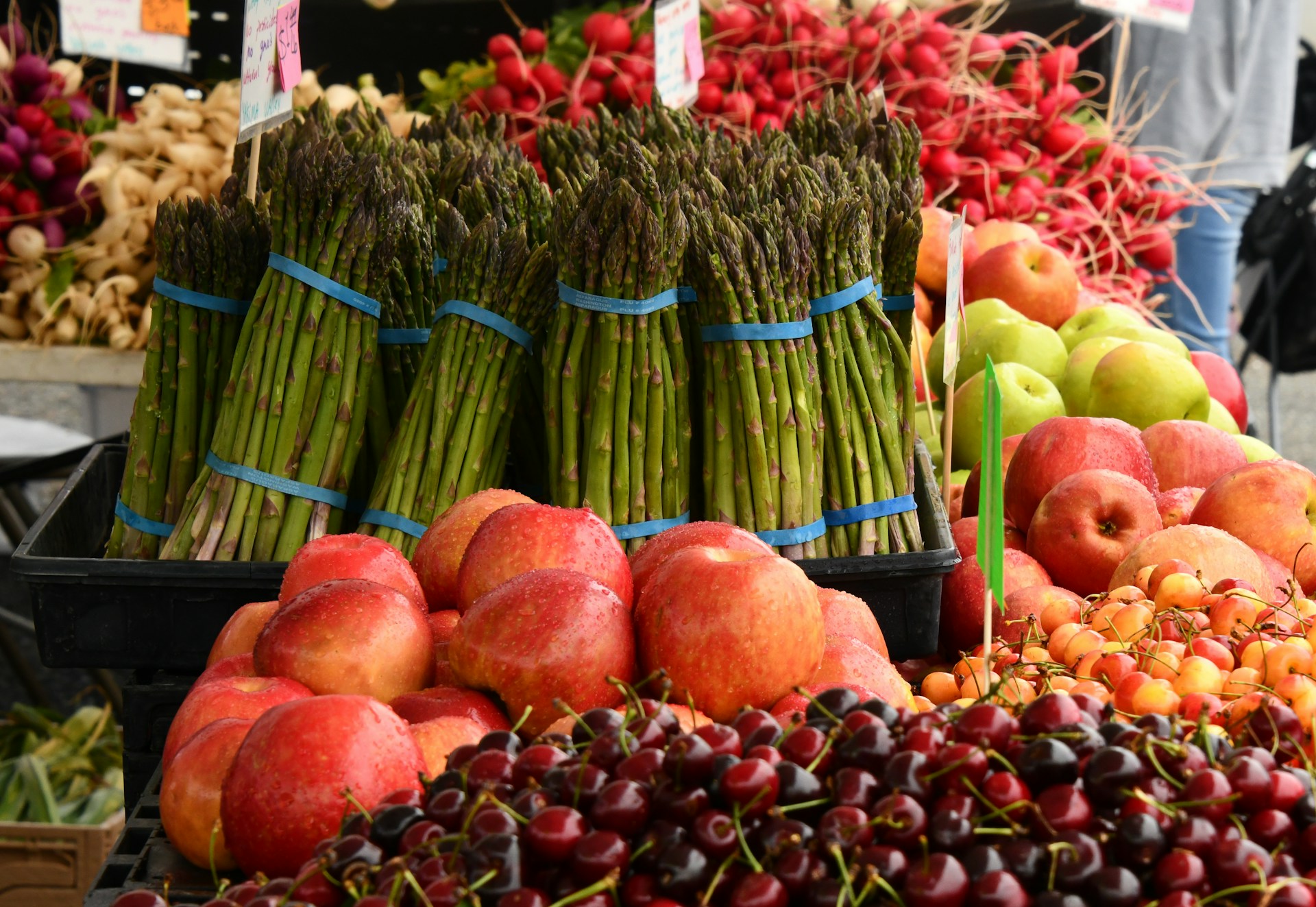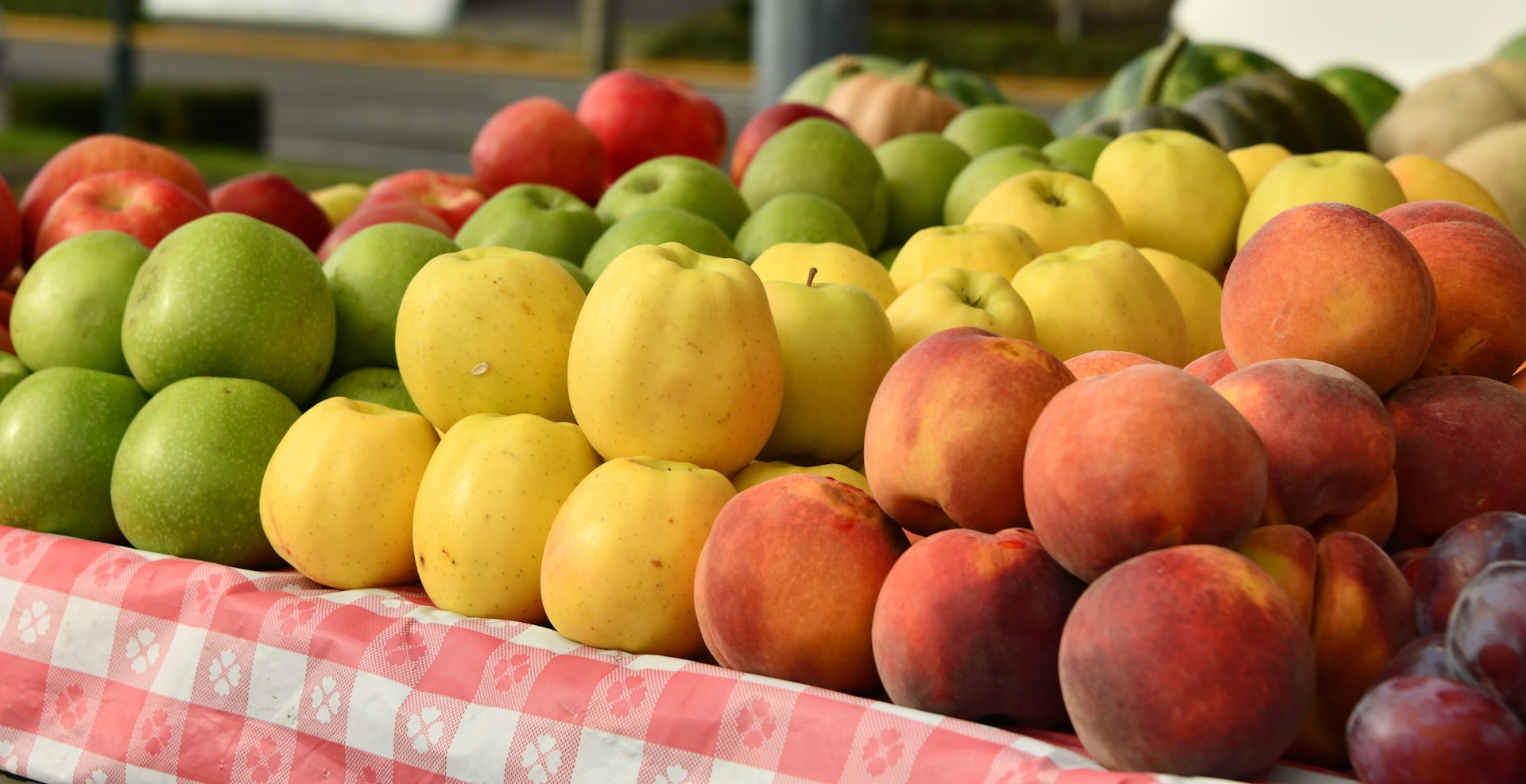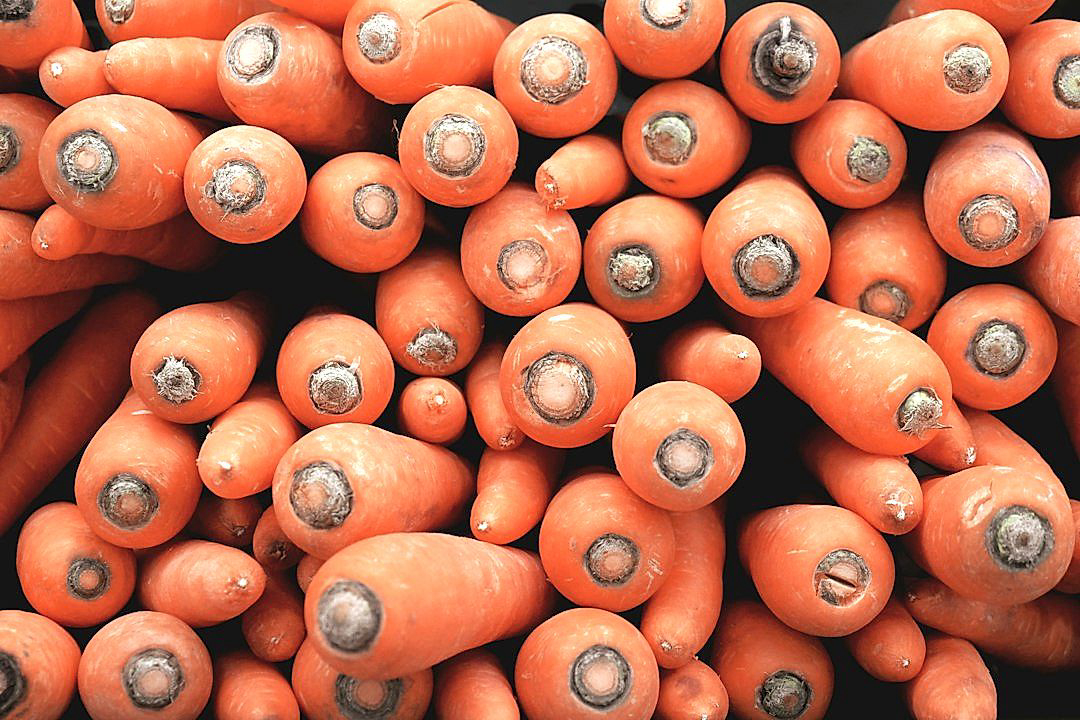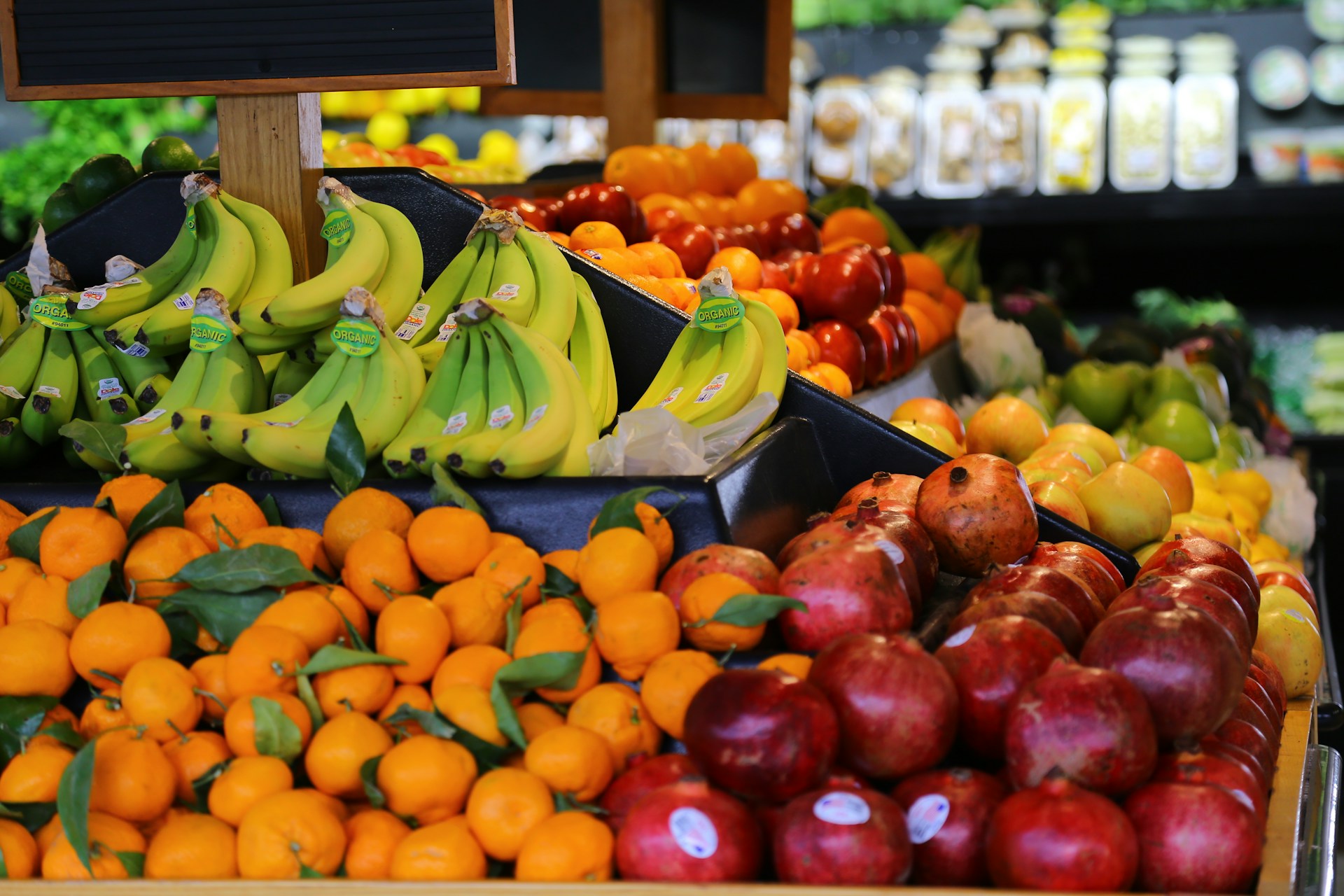The escalating global problem of waste persists, with an alarming quantity produced by the food supply chain.
As we delve into the complexities behind this issue, it is crucial to focus on one of its most significant contributors: produce distribution inventory.
With the increasing awareness of the environmental impact of waste, strategies to reduce it become paramount.
This discussion will hence offer valuable insight into achievable measures in the realm of food distribution to curb waste.
Focusing on some actionable, scientifically-backed principles, we aim to shed light on the ways in which waste reduction can be strategically implemented in the supply chain.
This will not only benefit the environment, but also improve efficiency, ultimately enhancing the bottom line of any business involved in produce distribution.
Contents
- Waste Reduction Strategies For Produce Distribution Inventory
- 1. Implement a first-in, first-out inventory method.
- 2. Invest in Proper Storage Facilities
- 3. Implement effective inventory management software
- 4. Regularly check inventory for spoilage.
- 5. Use Air Freight for Longer Distances
- 6. Make small, frequent orders instead.
- 7. Collaborate with Suppliers for Direct Produce Delivery
- 8. Donate excess items to local food banks.
- 9. Use Eco-Friendly Packaging to Reduce Waste
- 10. Train employees about waste reduction.
- The Bottom Line
Waste Reduction Strategies For Produce Distribution Inventory
1. Implement a first-in, first-out inventory method.
The first-in, first-out (FIFO) inventory method can be a game changer in waste reduction strategies for produce distribution inventory.
This specific inventory management method gives priority to items that were first bought or produced, ensuring that they are the first to be sold or used.
Amongst other benefits, it guarantees that no item is left unchecked in the storage facility for too long, thereby reducing the risk of spoilage and waste.
By implementing a FIFO inventory method, produce distribution companies ensure that older items are utilized before newer ones, mitigating the risk of waste due to spoilage of items left unchecked.
For a company dealing with fresh produce, which invariably has a short shelf-life, FIFO can be a substantial waste reduction technique.
This is because it ensures that every unit of product has the maximum possible selling time or is used before it becomes unfit for sale.
The FIFO method is not only a good inventory strategy for controlling waste, but it also assists in avoiding inventory obsolescence.
Inventory obsolescence happens when goods remain in inventory for too long until they cannot be sold anymore due to changes in demand, market trends, or expiry of the products.
If this occurs, the stock is written off as waste, which leads to unnecessary losses for the business.
Adopting a FIFO method ensures that goods are sold in time, minimising the risk of inventory obsolescence.
However, implementing FIFO requires a proper storage arrangement and an efficient tracking system.
Items need to be strategically arranged so that the oldest stock is readily accessible, and the movement from old to new stock is seamless.
With an efficient tracking system, companies can keep tabs on when goods were received, how long they have been in stock, and when they should be knocking off the shelves.
Investing in inventory management software can considerably streamline this procedure and ensure an error-free application of the FIFO method.
In essence, FIFO can significantly minimise waste from spoiled goods in the produce distribution sector, thereby conserving resources, cutting costs, and promoting a circulatory economy.
If handled appropriately, it could be a step forward in creating a more sustainable business model.
2. Invest in Proper Storage Facilities
Having proper storage facilities plays a pivotal role in waste reduction for produce distribution inventory.
It goes without saying that produce is highly perishable and needs specific conditions to prevent spoilage.
Not every type of produce can be stored in the same manner, as each has unique storage requirements.
For example, bananas need a different temperature and humidity level for storage compared to apples or tomatoes.
Learning about and adhering to these individual storage needs can greatly reduce spoilage and waste, thereby increasing inventory efficiency.
Substantial investment in advanced storage facilities can impact the freshness and longevity of your produce, thus reducing unnecessary wastage.
Hence, considering this, businesses should invest in storage facilities that can accommodate a range of storage conditions.
These facilities would typically involve adjustable temperature and humidity controls to cater for different types of produce.
Often, a significant thing to remember is that investing in quality storage is not an expense, but rather an investment in the business.
This is because the money spent on enhancing storage conditions can be recovered through minimizing losses from spoilage.
Additionally, a robust inventory management system would be ineffective without appropriate storage solutions.
No matter how good the logistics and handling may be, if the storage facilities are subpar, the produce is likely going to spoil, leading to waste and loss.
Therefore, storage is a critical part of waste reduction strategies in produce distribution inventory.
By valuing and investing in proper storage facilities, businesses are not only reducing waste but also positioning themselves to provide fresh and high-quality produce to their customers.
In the end, these actions will inevitably lead to satisfied customers, less waste, and a higher return on investment.
3. Implement effective inventory management software
One essential part of waste reduction strategies in produce distribution inventory is the implementation of an effective inventory management software.
This software, essentially a tool that digitalises and streamlines the inventory process, takes into account various parameters like the shelf-life of the produce, incoming inventory, outgoing stock, and the timing of reorders.
The use of such software resonates with the modern era’s emphasis on digitalisation and speed.
It facilitates quicker and more accurate inventory tracking, allowing businesses to forecast their demand and schedule their purchases accordingly.
Effective inventory management software is facilitated by various technologies like barcode scanners, mobile apps, and even sometimes with artificial intelligence.
Automated notifications about low stock levels, expiry date reminders, and best-before dates can be set up, which significantly reduces the chance of spoilage and wastage.
This ability to closely monitor inventory levels is incredibly valuable; it helps institutions make more informed decisions to order only what is necessary and needed.
Furthermore, such software enables organisations to identify the products that are not moving as swiftly, enabling them to adjust their purchase and sales strategies.
Inventory management software often integrates smoothly with other business systems like accounting and CRM software, providing a more holistic overview of your business.
They also provide a myriad of reports and metrics that enable businesses to gain insights and make data-driven decisions to optimise inventory levels.
Another benefit of deploying an inventory management system is that it can incrementally decrease the time consumption of manual labour in dealing with inventory tracking and management.
Moreover, human error, which may result in over or under-stocking, and ultimately lead to waste, can be drastically reduced with the help of a robust inventory management system.
An added benefit of using such a software could be its positive impact on the environment by reducing paper usage.
With a smaller ecological footprint, businesses can achieve a greener brand image and appeal to a larger customer base that values eco-friendly practices.
On a concluding note, investing in a strong inventory management software does not only bring efficiency but brings in profitability by reducing waste.
4. Regularly check inventory for spoilage.
Investing time to regularly check inventory for spoilage is a key waste reduction strategy for produce distribution inventory.
Organizations that deal with fresh produce cannot afford to trivialize the importance of timely inspection of their inventory.
Spotting spoilage early provides an opportunity to salvage some produce before it is rendered completely unfit for sale.
The process requires a keen eye for detecting the different signs of spoilage which vary considerably across different types of produce.
For example, wilting is usually an early sign in leafy vegetables while the discoloration often signifies spoilage in fruits.
Understanding these signs and acting quickly upon detection can make a significant difference in reducing inventory waste.
While physical checks are vital, technological interventions can and should be utilized to aid in the detection process.
This could be in the form of temperature controls in the storage facilities that trigger an alert when conditions that favor spoilage are detected.
Data analytics can also be employed to predict the likely shelf-life of different types of produce allowing for better inventory planning.
Regular checks, however, do not end at detecting spoilage but also involve taking corrective action.
The action taken depends on the extent of spoilage, but one approach could be to separate the spoiled stock from the fresh produce to avoid further contamination.
In some cases, the spoils might still have some value and can be sold at a discounted price to customers who do not mind slightly spoiled produce.
This is especially useful in food service establishments that can turn the produce into meals within a short time.
Alternatively, the produce can be recycled or composted for use in farming activities which ensures that it does not go to waste completely.
Regular checks on inventory for spoilage provide a win-win situation for the organization and for the environment through reduction of waste.
5. Use Air Freight for Longer Distances
The practice of using air freight for longer distances is one potentially effective waste reduction strategy in the realm of produce distribution inventories.
When transporting fruits and vegetables over long distances, time is of the essence in order to prevent spoilage and ensure that the produce arrives in the best possible condition.
Compared to other modes of transportation, such as road and sea freight, air freight is significantly faster.
This means that your inventory can reach its destination more quickly, reducing the amount of time that produce spends in transit and thus minimizing the risk of spoilage.
This strategy is particularly beneficial for businesses that distribute perishable items across vast distances or to remote locations.
However, it’s worth noting that air freight can be more expensive than other transportation methods.
Despite the increased cost, the decrease in losses due to spoilage can ultimately result in net savings for the distributor.
Furthermore, air freight also allows for better control of temperature and humidity conditions during transit, which are crucial to preserving the freshness and quality of fruits and vegetables.
In addition, using air freight can also result in lower fuel consumption and carbon emissions per kilogram of produce transported compared to road transport.
This not only reduces financial costs, but also has a smaller impact on the environment, making it a more sustainable choice.
For distributors, it’s important to remember that this strategy should be complemented with other waste reduction practices, such as proper storage and packaging, to maximize its effectiveness.
Therefore, while using air freight might seem like a more expensive and complex option in the short term, when considering the potential for waste reduction and increased sustainability, it may be a strategy worth considering.
By using air freight for longer distances, distributors can effectively streamline their operations, reduce waste, save money, and improve the overall quality of their produce.
Perhaps the most significant benefit of using air freight, though, is the potential to deliver high-quality, fresh produce to consumers, no matter how far away they may be.
6. Make small, frequent orders instead.
One effective waste reduction strategy in the context of produce distribution inventory is to make smaller, yet more frequent orders.
Often, businesses order large quantities of product in an attempt to take advantage of volume discounts or reduce shipping costs.
However, this approach can lead to an excess of produce, some of which may spoiler before it can be sold or used, thus resulting in needless waste.
Smaller, more frequent orders can help prevent this issue.
They allow businesses to maintain a steady, fresh supply of produce without having large amounts sitting in storage.
This approach can even potentially reduce costs in the long term, as less money is lost on spoiled goods or excessive storage costs.
It’s also an adaptable method, as order sizes can be easily adjusted based on changing demand patterns.
Besides reducing waste, frequent small orders also ensure that the produce is always fresh, which can be a big selling point to customers.
However, it’s worth noting that this strategy does require effective inventory management.
Businesses need to keep a close eye on inventory levels and sales data in order to determine when and how much to order.
Consequently, this approach is most successful when combined with other waste reduction strategies, such as the implementation of effective inventory management software.
Moreover, it’s also crucial for businesses to maintain good relationships with their suppliers.
If a supplier can provide quick, reliable delivery, small frequent orders become a more viable and efficient waste reduction strategy.
In summary, by making smaller, regular orders, businesses can reduce unnecessary waste, save money, and provide their customers with fresher produce.
7. Collaborate with Suppliers for Direct Produce Delivery
One of the most effective waste reduction strategies for produce distribution inventory is to collaborate with suppliers for direct produce delivery.
Engaging with suppliers can help businesses align their procurement practices with demand, preventing overstocking and reducing waste significantly.
Direct delivery of produce from supplier to retailer or end user can minimize the time produce spend in transport, lessening the risk of spoilage and damage.
Working with suppliers can also afford keep track of the exact timing and quantity of stock they receive, allowing them to better plan their inventory and reduce waste.
When suppliers are made aware of the retailer’s exact needs, they can harvest and deliver produce just in time, reducing the time the produce spends in storage.
This direct-to-retailer or direct-to-consumer approach not only reduces waste but also ensures the freshness and quality of produce.
In addition, having a collaborative approach with suppliers can streamline and enhance the efficiency of the distribution process.
This, in turn, ensures that inventory is always replenished with fresh stock, minimizing the need for waste due to spoilage or expiration of products.
Collaborating with suppliers for direct produce delivery also leads to better trust and understanding between the two parties, which can further improve the supply chain process.
It is also beneficial for suppliers, as they get a clearer picture of the retailers’ demand and can plan their production accordingly.
By engaging in a closer, more cooperative relationship with suppliers, businesses can gain an edge in reducing waste and improving their sustainability practices.
Integrating this strategy into the inventory management process is an effective way to cut down on wastage, lowering costs and improving profits.
Apart from reducing waste, this strategy can also help enhance customer satisfaction as customers get fresh and high-quality produce due to the shorter supply chain.
In the long run, businesses that take the time to cultivate strong supplier relationships will see a notable reduction in their waste, resulting in savings and a more sustainable operation.
With the right execution, the strategy of direct produce delivery can have a beneficial impact on the entire operation, from procurement to inventory management to customer satisfaction.
.Therefore, it’s evident that a collaboration with suppliers for direct produce delivery is an advantageous strategy which significantly contributes to the waste reduction for produce distribution inventory.
8. Donate excess items to local food banks.
Among the many waste reduction strategies for produce distribution inventory, donating excess items to local food banks stands out as a particularly noble and effective tactic.
The cyclic nature of produce supply and demand can often lead to inventory overflow, with surpluses not able to be sold before they spoil or degrade in quality.
By partnering with local food banks, distribution companies not only reduce waste, but they also contribute meaningfully to their communities.
This donation process represents a win-win situation, feeding those less fortunate while also offsetting the potential financial and environmental costs associated with discarding produce.
Donating excess items to local food banks helps not only in reducing waste but also in contributing positively to the community.
Action on waste reduction is crucial in the modern era, and food banks are often in high demand, additionally helping to alleviate local hunger challenges.
Such a solution may also open up possibilities for companies to claim tax deductions or even receive state incentives for their considerable contributions to the fight against hunger and food waste.
The surplus produce that may not be aesthetically pleasing enough for retail but is entirely safe and nutritious to eat can find a second life through these donations.
Furthermore, this strategy dovetails nicely with the principles of corporate social responsibility (CSR), boosting a company’s reputation and brand image.
This action shows that the company is not just profit-driven, but also locally engaged and environmentally conscious.
It is essential, however, to develop a systematic process for separating, sorting, and preparing produce items for donation to food banks.
Ensure that your inventory management system can handle such operations and can adapt to the needs of the receiving organizations.
Remember, the produce must be in a condition suitable for consumption, fulfilling all health standards and regulations.
Overall, donating excess produce to local food banks remains a highly effective way to reduce food wastage—benefiting not just businesses, but locals and the environment as well. It demonstrates how waste reduction strategies can also contribute to positive societal impacts.
9. Use Eco-Friendly Packaging to Reduce Waste
One key method of waste reduction in produce distribution inventory is the adoption of eco-friendly packaging.
Traditional packaging methods often incorporate materials such as plastic and Styrofoam, which are non-biodegradable and contribute significantly to environmental waste.
However, the adoption of eco-friendly packaging solutions offers a more sustainable alternative.
Eco-friendly packaging materials are typically biodegradable, recyclable, and made from renewable resources, reducing their environmental impact.
The use of plastic alternatives, such as plant-based polymers, is one example of these sustainable materials.
These alternatives can degrade naturally in the environment, reducing the amount of waste that ends up in landfills.
Switching to eco-friendly packaging not only reduces environmental waste, but can also enhance the brand’s reputation as a sustainable and responsible business.
Moreover, customers are becoming increasingly aware of their environmental impact and are consequently altering their purchasing habits.
Businesses that demonstrate a commitment to sustainability can attract these environmentally-conscious consumers, potentially improving profits.
Furthermore, some forms of eco-friendly packaging can even extend the shelf-life of produce, leading to less waste from spoilage.
A combination of good storage practices, optimized distribution methods, and the use of eco-friendly packaging can greatly aid in waste reduction.
However, businesses must ensure the eco-friendly alternative packaging they choose is also practical and cost-effective.
Conducting research and trials before fully investing in new packaging methods is therefore advisable.
This can help identify any potential challenges or inefficiencies and allow time to make necessary adjustments.
Investing in eco-friendly packaging is not only beneficial for the environment but also poses potential economic and branding advantages for businesses.
Reducing waste in produce distribution is an on-going challenge but implementing sustainable packaging options is a significant step in the right direction.
10. Train employees about waste reduction.
In the grand scheme of produce distribution inventory, a crucial step in effectively reducing waste is to educate and train employees on the matter.
Not just any training will suffice; it should be well-rounded and expansive, aiming to cover all the areas of waste and how each can be mitigated.
As the backbone of the distribution operations, employees play a vital role in the overall waste reduction process.
It is, therefore, important to empower all staff with the necessary knowledge and skills to identify and minimize waste.
Waste can be reduced significantly by following specific practices such as using a first-in, first-out method in the storage facility, correctly using the inventory management software, frequently checking for spoilage, and maintaining the right temperature and humidity levels in the storage areas.
The power of knowledge in waste reduction for employees goes a long way in affecting the overall waste management outcomes for the firm.
The training program should not only focus on theoretical concepts but also give employees a chance to experience and practice their newly acquired knowledge.
Interactive simulations of scenarios they might encounter in the warehouse, or guided tours explaining storage techniques and the correct use of equipment are effective learning tools.
Embedding the use of eco-friendly packaging materials during the training exercise will not only reduce waste but also familiarize employees with environment-friendly distribution practices.
Involving employees in decisions that affect waste reduction, such as making orders or donating excess produce, can foster a sense of responsibility and ownership.
It’s a no-brainer that knowledge shared with local food banks about the kind of products they can expect and when, significantly reduces the chances of spoilage, reinforcing the importance of training.
Continual learning and retraining must be encouraged as these are integral components of waste management which keep all staff current with latest practices and strategies in waste reduction.
Clearly communicating the objectives and benefits of waste reduction to the employees is equally as important as the training itself.
When employees understand the positive impact their actions can have on the company’s profits, and the environment, they are more likely to be committed and enthusiastic about reducing waste.
The waste reduction training should position the produce company as not just a profit-oriented entity, but one that also deeply cares about the environment and community.
The Bottom Line
Sentences.
Fostering strategic partnerships for direct produce deliveries, making smaller, frequent orders, employing a first-in, first-out inventory method, and utilizing effective inventory management software can profoundly enhance the efficiency and decrease food wastage.
Regular checks for spoilage alongside investing in proper storage facilities can further mitigate waste.
Utilizing air freight for longer distances might appear costlier but significantly reduces spoilage chances, saving money in the long run.
Excess items can be donated to local food banks, serving the dual purpose of waste reduction and community service.
Transitioning to eco-friendly packaging and training employees about waste reduction are indispensable in cultivating a sustainable, waste-conscious company culture.




